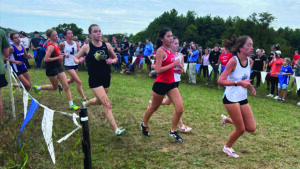The picture is not a pretty one at Nationals Park and those at home holding the remote control are inclined to agree.
SportsBusiness Journal reported this week that an average of just 9,000 households tune in Nationals games broadcast on the Mid-Atlantic Sports Network (MASN) and sister station MASN2. That total is the worst in the majors and represents a decline of 43 percent from last season. The Kansas City Royals own the second-lowest household average, but still draw roughly 19,000 more households than the Nats. Let that sink in for a second. More than 19,000 people would rather watch the Kansas City Royals – they of the 285-453 cumulative record since Opening Day 2004 – than your Washington Nationals. You can spin those figures all you want, but that’s still got to sting if you are Team President Stan Kasten or a member of the Lerner family.
While the TV numbers are shocking, they can be curbed by an average 2008 attendance that places Washington 15th in the Majors with 29,754 a night. That’s a pretty nice turnout for a team entrenched in last place of the National League East.
Things could, and likely should, improve on the field and when they do, the fickle fans of Washington will watch en masse. Just look at this past spring when the once woefully attended Capitals became one of the toughest tickets in town. But given the Nats’ current predicaments – the worst record in baseball on July 7, with the league’s worst run differential and fewest runs scored – there is a lot of work ahead that will require a critical eye rather than rose-colored glasses.
For starters, the Nats shouldn’t be too quick to seize on those attendance numbers as a silver lining. When the Pittsburgh Pirates – the dictionary definition of a struggling franchise – opened their new PNC Park in 2001, they ranked 17th in attendance. By 2003 the Pirates had plummeted back into the bottom five in that category, undoubtedly because of continued struggles on the field. Washington will need to address its own struggles, and soon, if it wants to extend its own new home park honeymoon.
For the past two years, this core group of veterans has proven little except that it has a propensity for injury. Aside from Ryan Zimmerman, Lastings Milledge and Elijah Dukes, I don’t know if anyone should be a lock to return next season. I would add Jon Rauch to the list, but he may be more valuable as trade bait given the inflated value of high-end bullpen help at the July 31 deadline.
With ample openings, the second-half should be an open audition for those minor leaguers closest to The Show, like outfielder Kory Casto and pitchers Garret Mock, Tyler Clippard and Zechry Zinicola.
But some of the most promising draft picks have not yet panned out in the minors. Ross Detwiler (5.87 ERA with the Class A Potomac Nationals) and Chris Marrero (a .250 batting average, albeit with 11 HR before getting injured with Potomac) have been considered among the cornerstones of the rebuilding process but have not risen as rapidly as expected. It’s far too early to label their development disappointing, but it feels like the Nats’ bright future, built around their recent high draft picks, is further off than first thought.
The MASN mess must also be addressed. The team needs to work with the network to further the station’s pathetic coverage of the team. Aside from a half-hour pre-game and post-game show that straddles the game broadcast, there is no Nats-centric programming on the network. Meanwhile, the Yankees’ YES Network is re-airing classic games, interviewing past players and debating which of Jason Giambi’s mustache hairs demonstrates the most personality. MASN fills its schedule by broadcasting ESPNEWS, which viewers can already see on – you’ll never guess – ESPNEWS. They also broadcast radio shows by Anita Marks and John Riggins. Using TV to air radio shows, there’s gripping action for you.
Last but not least, while attendance at the new stadium is OK given the team’s record, it needs to improve. The empty seats in the ridiculously expensive area behind home plate are absolutely embarrassing. If the seats aren’t selling, they should be made available the day before a game to summer camps, Little Leagues or inner city youth programs, giving an up-close-and-personal experience to kids that otherwise can’t afford it. Who knows? Maybe the ticket generosity will be returned upon the Nats when these kids, excited by the opportunity to see big leaguers without the use of binoculars, actually tune in to see the Nats on TV.












